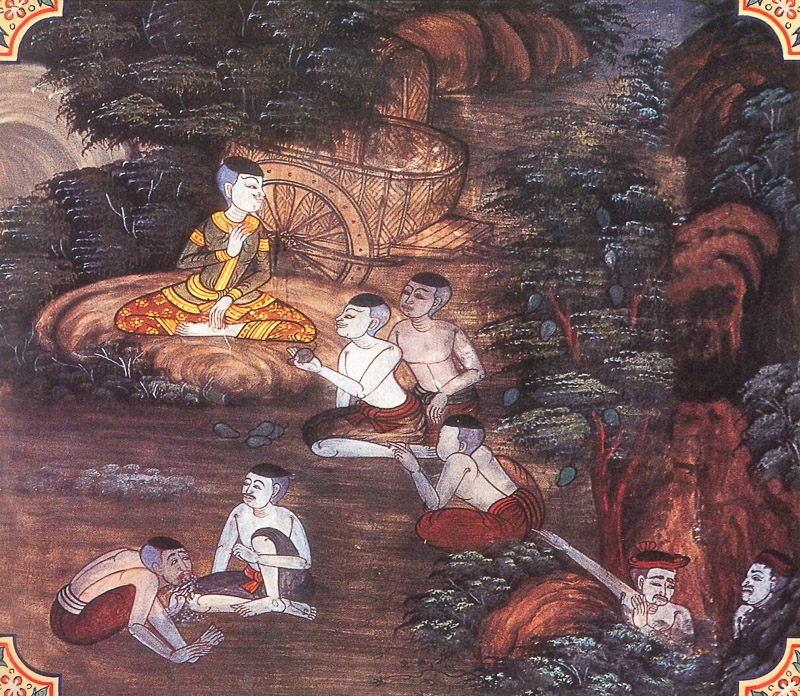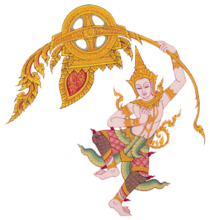
The Bodhisatta was once a merchant who led large oxcart caravans to trade with distant lands. During one trip through a vast forest, the Bodhisatta warned his men not to eat anything unfamiliar without checking with him first, because poisonous trees grew there. Some of his men came upon a kimpakka tree, which in every regard, from the appearance of the leaves to the taste of the fruit, is similar to a mango tree; except that eating the kimpakka fruit causes instant death. Impatient, these men ate some. When the Bodhisatta arrived later, he realized this was not a mango tree and gave his men an elixir that saved their lives.
People from a nearby village knew that travelers on this road often ate the kimpakka fruit and died, and they would come take their oxen, wagons, and wares. That morning, they were surprised to see that even though the Bodhisatta had set up camp near the tree, everyone was still alive. They asked the Bodhisatta how he knew this was not a mango tree and he answered that if a mango tree grew near a village, people would pick the mangoes, but this tree was full of fruit.
In the Lifetime of the Buddha
A man had invited some of the Buddha’s disciples to receive alms in his garden. After they had eaten rice gruel and cakes, the man ordered his gardener to walk around with the disciples and give them fruit. They were impressed by the gardener’s knowledge—he could tell with a single glance at a tree which fruits were ripe and unripe.
When the disciples told the Buddha about these impressive skills, the Buddha told them this story so they knew that in the past he himself had similar knowledge of fruits.
The people of the caravan were earlier births of the Buddha’s disciples.
